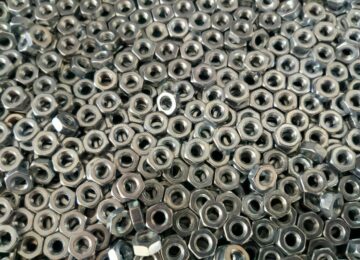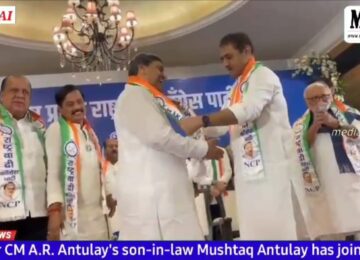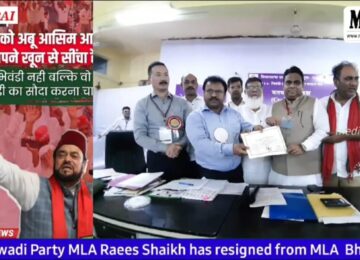Anupama Nair
India has always given birth to many brave sons and daughters who sacrificed their lives for their mother land. Be it Rana Pratap, Shivaji Maharaj, or Rani Laxmi Bai, the list is never ending. Even after Independence many brave sons and daughters gave their lives for us. “The Indian Army has been filled with spine-chilling tales of valor, the indomitable spirit in the face of adversity, and unparalleled devotion towards our motherland”. It is said brave hearts are not born with any special power, they are ordinary people like us, but they possess indomitable spirit and bravery when the situation demands. So is the tale of our brave Indian army soldiers who have proved it time and again after Independence.
Today, I am going to talk about some officers whose ‘tale of valor’ inspired us over the years. It is a known fact that the braves of the Indian Army sacrifice their own lives during any war so that the entire country can sleep in peace. The stories of their bravery, courage, and passion are larger than life stories. Their bravery will not only just make us proud but also their sacrifices will leave our eyes a little moist.
Today I am going to talk about the famous Indo-Pak War of 1971 and the brave hearts who ensured India won the war. The Indo-Pakistan war of 1971 began on December 3 and lasted for 13 days, after which Pakistan was humiliated and surrendered to India and Bangladesh. “The Indian Army brought the Pakistani Army to its knees, took 93,000 war prisoners and gave Independence to 75 million people of Bangladesh”, stated a media report. It was also considered to be the largest military surrender after the Second World War. Unfortunately, around 3,800 soldiers lost their lives in the war to end the genocide Pakistan committed against the Bengali population of East Pakistan.
The war started after Pakistan launched airstrikes on 11 Indian airbases. It was perhaps the first time in which all three Indian forces – army, airforce and navy fought together. India quickly responded to movements of the Pakistan Army in the west and captured around 15,010 KM of its territory. The war ended after the chief of Pakistani forces, General Amir Abdullah Khan Niazi and its 93,000 troops surrendered to the joint forces of the Indian Army and Mukti Bahini of Bangladesh. General Niazi signed the ‘Instrument of Surrender on December 16, 1971, in Dhaka, and East Pakistan became Bangladesh. “For Pakistan, the war was a complete and humiliating defeat, a psychological setback that came from a defeat at the hands of rival India. Pakistan lost half its population and a significant portion of its economy, and suffered setbacks to its geopolitical role in South Asia”.
The Battle of Longewala (4–7 December 1971) was one of the first major actions in the western sector during the War of 1971, fought between the forces of Pakistan and the Indian defenders at the border post of Longewala, in the Thar Desert. The battle was fought between 120 Indian soldiers accompanied by 4 Hunter fighter aircraft and 2000-3000 Pakistani soldiers accompanied by 30-40 tanks.
The reinforced battalion of the Indian Army's 23rd Battalion, Punjab Regiment, led by the brave Major Kuldip Singh Chandpuri, was left with the choice of either attempting to hold out until reinforced, or fleeing on foot from a Pakistani force. Fleeing was never an option for any brave Indian officer, so Chandpuri ensured that all his assets were deployed, and made the most use of his strong defensive position, as well as weaknesses created by errors of the Pakistani Army. The battle of Longewala witnessed heavy Pakistani losses and only a few Indian casualties.
The Battle of Longewala was depicted in the 1997 Bollywood film Border, directed by J.P. Dutta and starred Sunny Deol as Major Kuldip Singh Chandpuri, Jackie Shroff as Wing Commander M.S. Bawa, Sunil Shetty as Assistant Commandant Bhairon Singh (BSF), and Akshaye Khanna as 2nd Lieutenant Dharam Veer Bhan. The movie exaggerated the casualties of Indian soldiers for dramatic purposes. This was not the case in the real incident as Indian forces had defended a position on a height that commanded the area, and was able to defend it effectively due to tactical mistakes made by the Pakistani commanders.
The year 2021 is the golden jubilee year of India’s victory over Pakistan in the 1971 war. The Government has planned to celebrate the 50th anniversary of its victory as a ‘Golden Victory Year’ or ‘Swarnim Vijay Varsh’. A number of events were held as an effort to recognize and honor the bravery and sacrifices made by our gallant soldiers of the Indian Armed Forces in the 1971 war and also to rejoice as well as celebrate the occasion throughout the country with full enthusiasm. It sure is a great tribute to our great soldiers.
Now I am going to talk above the brave hearts of the war.
Lance Naik Albert Ekka (27 December 1942 – 3 December 1971) was a soldier in the Indian Army. He was martyred in action in the Battle of Gangasagar, during the 1971 War. He was posthumously awarded the Param Vir Chakra.
Nirmal Jeet Sekhon, (17 July 1945 – 14 December 1971) was an officer of the Indian Air Force. He was posthumously awarded the Param Vir Chakra, in recognition of his lone defense of the Sri Nagar Air Base against the Pakistani Airforce air raid during the War. He is the only recipient of the Indian Air Force to be honored with the PVC. Singh's remains as well as the location of the crash site of his aircraft are still unknown.
Rameshwar Nath Kao was a brave RAW officer, whose team was called ‘Kao-boys’, and is popularly known as the ‘architect of Bangladesh’ for his role in the 1971 war. While the war was a military victory and the credit goes to the Army, Air Force and the Navy, Kao was the one working behind the scenes and under whose leadership, the RAW actively helped Mukti Bahini, the Bangladesh forces, to triumph over West Pakistan.
Major General Ian Cardozo is a name tantamount to the 1971 War. He was a young Major with the 4/5 Gorkha Rifles when the war broke out. His battalion’s second-in-command was killed in action and Cardozo was ordered to replace him. Cardozo, was fondly called ‘cartoos sahab’ by his Gorkha regiment who took part in the Indian Army’s first heliborne operation. Towards the end of the war, Cardozo stepped on a mine and his leg was badly injured. Due to the non-availability of morphine and the absence of medics, his leg could not be amputated surgically. Faced with the threat of the gangrene spreading in his body, Cardozo used his own ‘kukri’ to amputate his own leg. Later, a Pakistani military doctor captured by the Indian forces operated on him. He eventually became the first war-disabled officer of the Indian Army to command a battalion and a brigade.
I bow to such brave Indian brave hearts. Jai Hind ki sena





























Very interestin article.